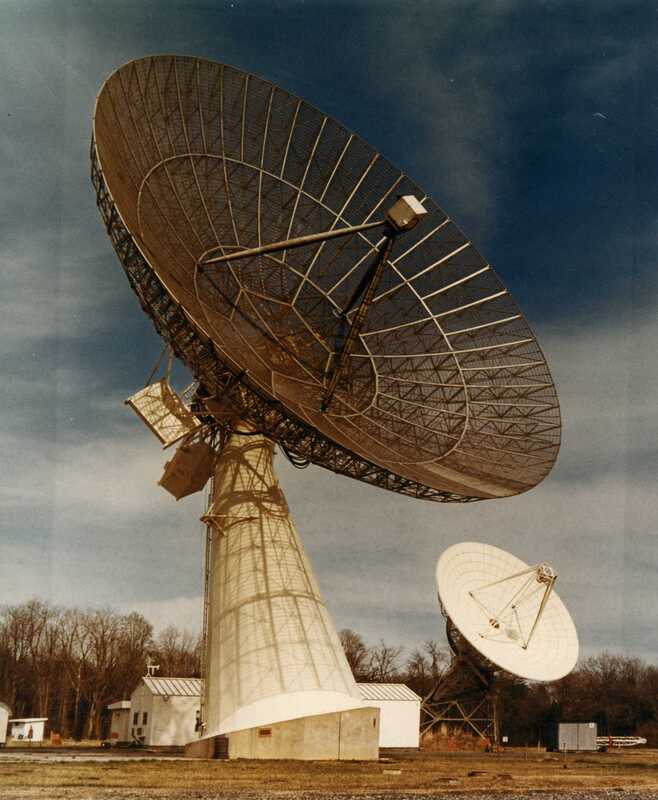Maryland Point 85 Foot Telescope
Subject
Description
The results of the first successful use of the NRAO-Cornell independent oscillator-tape-recording interferometer (VLBI) were published in the July 17, 1967 issue of Science by Claude Bare, Barry Clark, Ken Kellermann, Marshall Cohen and Dave Jauncey. This MK-1 VLBI system used a standard computer tape drive to record one-bit data at 720 kilobits per second. Each pair of tapes lasted only 3 minutes and took about one hour to process on an IBM 360-50 computer.
The past half century of VLBI has seen numerous upgrades to recorders and correlators. The MK-5 system currently in use for the VLBA and throughout the world uses computer disk drives to record at 2 Gbps giving a factor of 50 improvement in sensitivity over the 1967 system. The Mk-1 software correlator was soon replaced by a series of hardware correlators of ever increasing capabilities leading to the recent return to the DiFX software correlator.
This photograph shows one of the two antennas used in the May 1967 experiment: the Maryland Point 85 foot. The other is the Green Bank 85 foot Tatel Telescope.
The past half century of VLBI has seen numerous upgrades to recorders and correlators. The MK-5 system currently in use for the VLBA and throughout the world uses computer disk drives to record at 2 Gbps giving a factor of 50 improvement in sensitivity over the 1967 system. The Mk-1 software correlator was soon replaced by a series of hardware correlators of ever increasing capabilities leading to the recent return to the DiFX software correlator.
This photograph shows one of the two antennas used in the May 1967 experiment: the Maryland Point 85 foot. The other is the Green Bank 85 foot Tatel Telescope.
Creator
Records of the NRAO
Type
Still Image
Identifier
Md-Point-NRL-RiversideMD-85ft.jpg
Citation
Records of the NRAO, “Maryland Point 85 Foot Telescope,” NRAO/AUI Archives, accessed April 19, 2025, https://www.nrao.edu/archives/items/show/37037.

